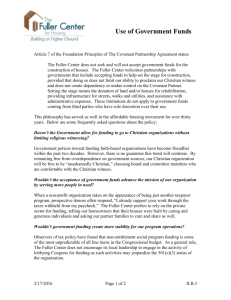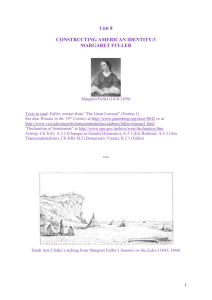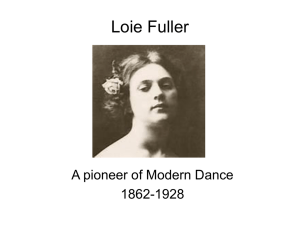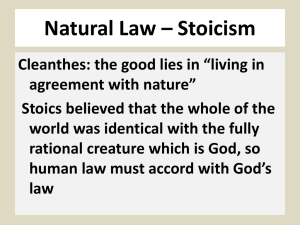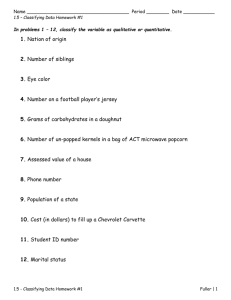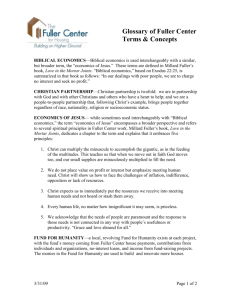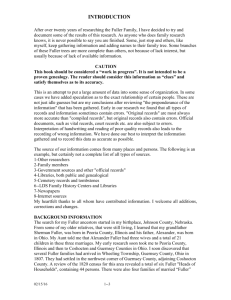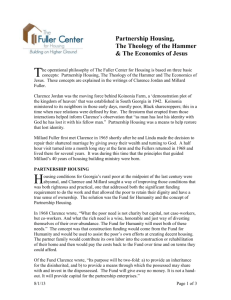Word - The Fuller Center for Housing
advertisement
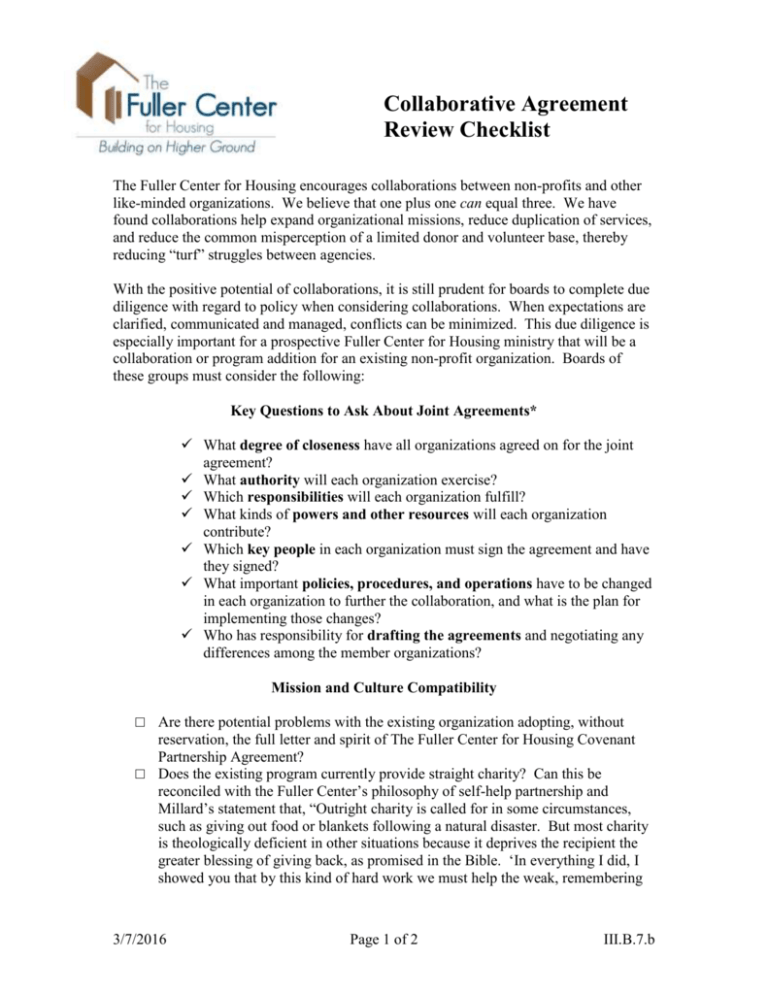
Collaborative Agreement Review Checklist The Fuller Center for Housing encourages collaborations between non-profits and other like-minded organizations. We believe that one plus one can equal three. We have found collaborations help expand organizational missions, reduce duplication of services, and reduce the common misperception of a limited donor and volunteer base, thereby reducing “turf” struggles between agencies. With the positive potential of collaborations, it is still prudent for boards to complete due diligence with regard to policy when considering collaborations. When expectations are clarified, communicated and managed, conflicts can be minimized. This due diligence is especially important for a prospective Fuller Center for Housing ministry that will be a collaboration or program addition for an existing non-profit organization. Boards of these groups must consider the following: Key Questions to Ask About Joint Agreements* What degree of closeness have all organizations agreed on for the joint agreement? What authority will each organization exercise? Which responsibilities will each organization fulfill? What kinds of powers and other resources will each organization contribute? Which key people in each organization must sign the agreement and have they signed? What important policies, procedures, and operations have to be changed in each organization to further the collaboration, and what is the plan for implementing those changes? Who has responsibility for drafting the agreements and negotiating any differences among the member organizations? Mission and Culture Compatibility □ Are there potential problems with the existing organization adopting, without reservation, the full letter and spirit of The Fuller Center for Housing Covenant Partnership Agreement? □ Does the existing program currently provide straight charity? Can this be reconciled with the Fuller Center’s philosophy of self-help partnership and Millard’s statement that, “Outright charity is called for in some circumstances, such as giving out food or blankets following a natural disaster. But most charity is theologically deficient in other situations because it deprives the recipient the greater blessing of giving back, as promised in the Bible. ‘In everything I did, I showed you that by this kind of hard work we must help the weak, remembering 3/7/2016 Page 1 of 2 III.B.7.b the words the Lord Jesus himself said: “It is more blessed to give than to receive.’” – Acts 20:35 □ Does the existing program accept government funding? Is the current organization’s government funding in conflict with the Covenant Partner Agreement? □ Does the existing program charge interest? How will programs that are in conflict with the Fuller Center Covenant Partnership Agreement be segregated from Fuller Center activities? Legal and Finance □ Does the existing organization have any debts, insurance loss history or legal liabilities that would transfer to the new Fuller Center ministry? □ Is there an expectation of financing for staff salaries? □ What are other budget implications? Marketing □ Are you willing to plan for a clear and consistent marketing strategy that describes the relationship between the organizations and/or programs? □ Do you have a strategy that will minimize donor confusion? □ Are both groups willing to use the approved Fuller Center logo and trademarks on appropriate marketing materials such as websites, brochures and newsletters? □ Will the mission of The Fuller Center be clearly articulated in press releases? Review Date ____________________ ____________________________________ Representing the Prospective Covenant Partner ____________________________________ Representing the Prospective Covenant Partner ____________________________________ Representing the Prospective Covenant Partner ____________________________________ Representing The Fuller Center for Housing *Winer, Michael and Ray, Karen. Collaboration Handbook, Creating, Sustaining and Enjoying the Journey. Amherst H. Wilder Foundation. (Saint Paul, Minnesota: 1994), 163, 164. 3/7/2016 Page 2 of 2 III.B.7.b
